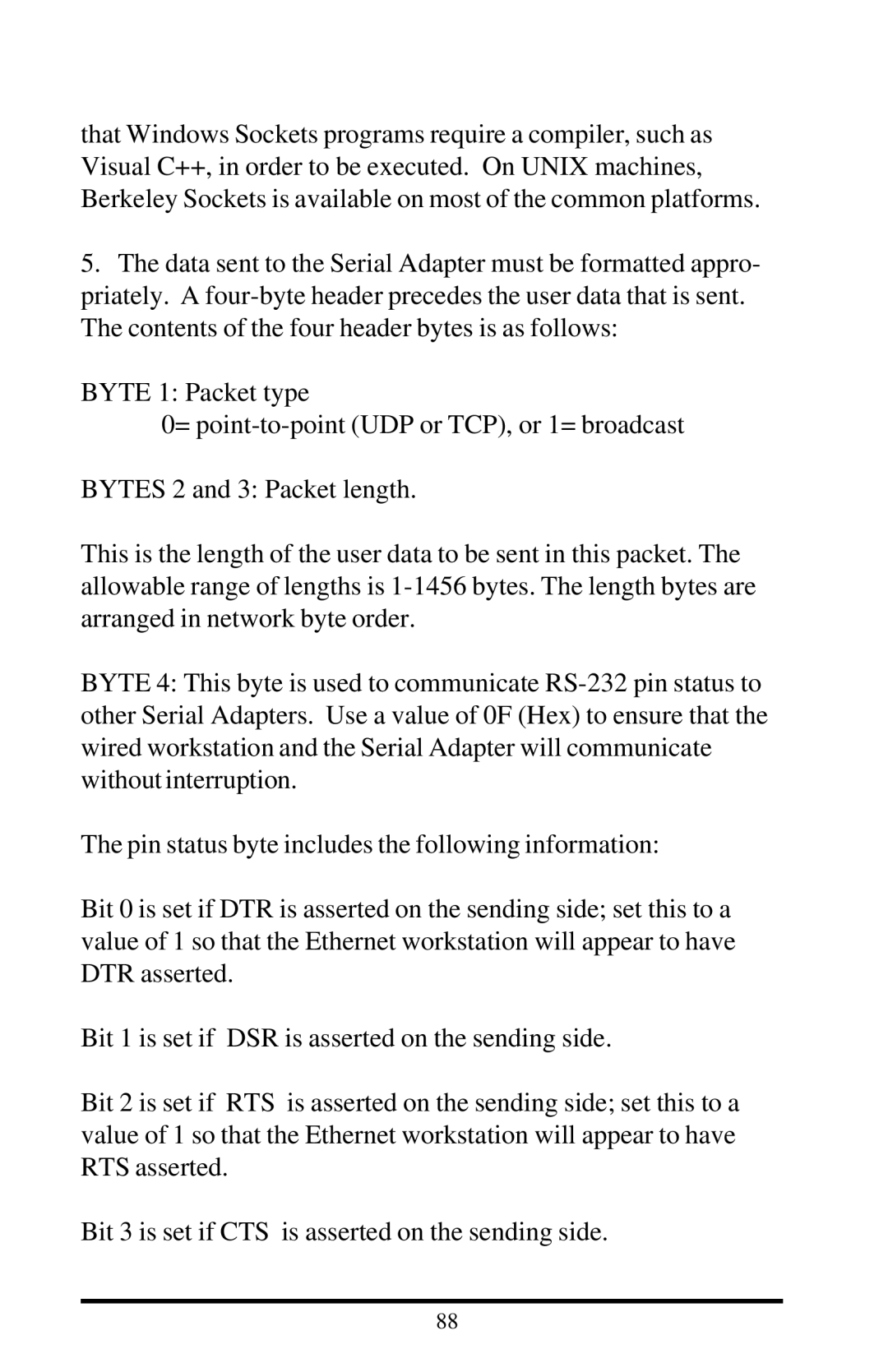that Windows Sockets programs require a compiler, such as Visual C++, in order to be executed. On UNIX machines, Berkeley Sockets is available on most of the common platforms.
5.The data sent to the Serial Adapter must be formatted appro- priately. A
BYTE 1: Packet type
0=
BYTES 2 and 3: Packet length.
This is the length of the user data to be sent in this packet. The allowable range of lengths is
BYTE 4: This byte is used to communicate
The pin status byte includes the following information:
Bit 0 is set if DTR is asserted on the sending side; set this to a value of 1 so that the Ethernet workstation will appear to have DTR asserted.
Bit 1 is set if DSR is asserted on the sending side.
Bit 2 is set if RTS is asserted on the sending side; set this to a value of 1 so that the Ethernet workstation will appear to have RTS asserted.
Bit 3 is set if CTS is asserted on the sending side.
88
